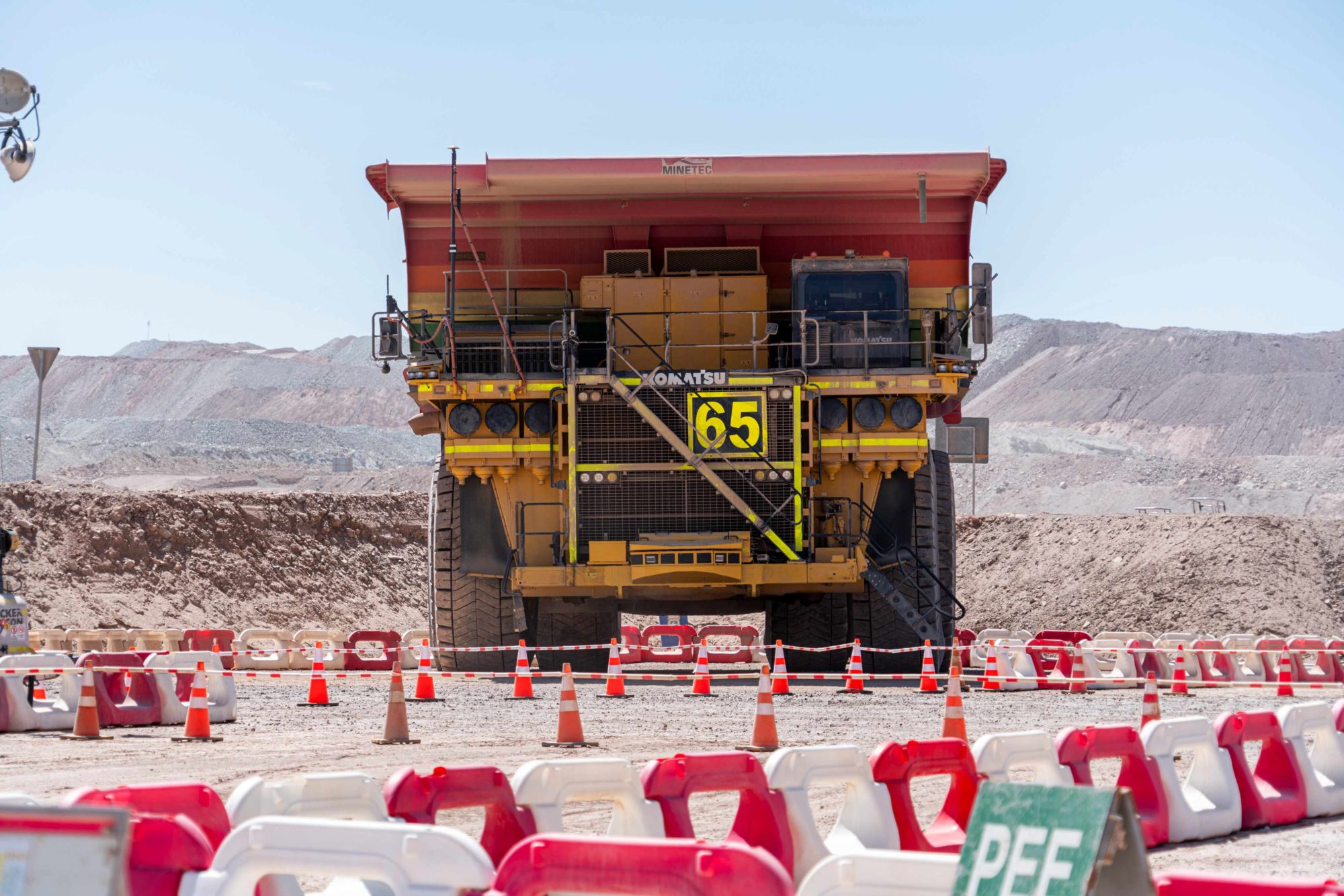Teamwork, greater competitiveness, safety and sustainability of the mine operation are among important benefits that BHP Spence in Chile recently celebrated after achieving full autonomy of the copper mining operations, having converted its fleet of 33 mining trucks and five blasthole drilling rigs, with zero incidents and managing to reduce exposure to safety risks by up to 90%.
Spence celebrated this milestone together with national and local authorities, who were able to learn on the ground how BHP continues to move towards autonomy, which allows for safer, more efficient operations and brings the company closer to the mining of the future.
“This has been a sustainable technological transformation process that today allows our operation to achieve full autonomy, with a fleet of 33 trucks and five drilling rigs, which we managed to implement a month ahead of schedule and with zero incidents. We are talking about an automation process in which people have always been at the centre, with the aim of building a safer, more efficient, diverse and inclusive workplace,” highlighted the President of Pampa Norte, the BHP business unit that includes Spence and Cerro Colorado, Cristian Sandoval.
The converted trucks at Spence are 363 t 980E-5 ultraclass models from Komatsu, with the autonomous haulage system used being Komatsu’s Frontrunner. The drills are Pit Viper 351 models using Epiroc’s autonomous drilling system. Initially the drills and trucks were monitored from a control room about 2 km from the pit but the main focus of the mine monitoring is now the BHP Integrated Operations Center in Santiago.
The Undersecretary of Labor, Giorgio Boccardo, highlighted the learning and training program for the company’s workers, a process that has reached 80% of job retraining and 50% female representation. “One of the elements we were hoping to see is how the reconversion plans were carried out, how the new roles were relocated and trained. In that sense, it seemed like a very good experience.”
“We greatly appreciate that companies want to move forward with the help of new technologies, to generate fewer and fewer risks in the workplace, which is undoubtedly very relevant. Furthermore, it is necessary to highlight that automation does not mean loss of jobs, but rather it is a job reconversion and creation of new roles,” added Camila Cortés, Seremi de Trabajo.
The transition to autonomy at BHP Spence has demonstrated in the field that it is possible to reduce people’s exposure to risks associated with the industry by up to 90%, in addition to contributing to generating greater competitiveness and allowing the company a more efficient use of its resources.
“This type of project has global relevance, given that it uses cutting-edge technologies that ensure operational continuity and, most importantly, the safety of workers, reducing exposure to accidents. Therefore, it is a very important program and not only for Spence, but also for the entire mining sector,” explained the National Deputy Director of the National Geology and Mining Service, Andrés León.
In this regard, the Vice President of Technology at Minerals Americas, Pedro Hidalgo, commented that this is the beginning of a great challenge to make the mine safer and more competitive every day. “Today we have the mission of getting the best out of this technology. We need to go further and analyse the data that automation gives us, how we can work on it and make better decisions that make our operation more efficient. Spence today is a guide, where much of the learning will also be transferred to BHP Escondida to continue working on the future of mining.”











